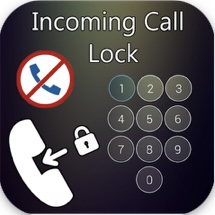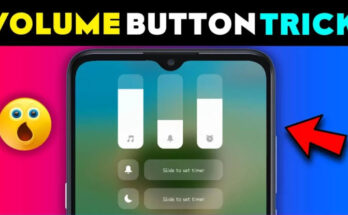Incoming Call Lock: Enhancing Privacy and Control in a Hyperconnected World
In today’s digital era, mobile phones are not just communication tools—they are personal hubs of information, productivity, and entertainment. As smartphones become increasingly integral to daily life, so too does the need for safeguarding privacy. Among the many emerging solutions to mobile security, the concept of an Incoming Call Lock stands out as a subtle yet powerful feature designed to protect users from unauthorized access during phone calls. This article delves deep into what incoming call locks are, their advantages, use cases, technologies involved, and why this feature is becoming essential in modern digital life.
What Is an Incoming Call Lock?
An Incoming Call Lock is a security feature that restricts unauthorized access to the phone during incoming calls. Typically, when a phone rings, anyone can answer or decline the call, even if the phone is locked or belongs to someone else. This can pose a serious privacy threat—especially in public spaces, workplaces, or households with shared devices.
Incoming call lock mitigates this risk by requiring authentication—such as a PIN, pattern, fingerprint, or facial recognition—before allowing the user to answer the call. In simple terms, it ensures that only the rightful owner can interact with incoming calls.
Why Is an Incoming Call Lock Necessary?
Many people overlook the vulnerability that incoming calls present. Here’s why this feature is gaining traction:
1. Privacy Protection
Imagine your phone rings while it’s on your desk, and a colleague, friend, or even stranger picks it up and answers the call. They could gain access to sensitive information or pose as you. Incoming call lock prevents this breach.
2. Preventing Unauthorized Use
Children or others in the household may answer your calls without knowing the context, leading to awkward or risky conversations. This feature gives the user full control over when and how calls are answered.
3. Professional Boundaries
For professionals who handle confidential or business-sensitive calls, incoming call lock helps maintain privacy. A doctor, lawyer, or business executive, for example, may prefer to restrict access to calls in order to comply with confidentiality obligations.
4. Security Against Scams
Many phone scams rely on unsuspecting individuals answering calls. With an incoming call lock, the chance of accidental answers or manipulation is greatly reduced.
Key Features of Incoming Call Lock
While the basic function is to restrict access, modern implementations of incoming call lock often come with additional features:
- Biometric Authentication: Use of fingerprint scanners or facial recognition to unlock calls.
- Custom PIN or Pattern Lock: A numeric PIN or unlock pattern can be required before calls are answered.
- Selective Contact Locking: Some apps allow you to lock calls only from specific numbers or unknown callers.
- Call Notification Without Details: Notifications can appear without showing caller ID or message content until authentication is completed.
- Auto-Lock After Timeout: Automatically re-locks incoming call screen after a set period if no action is taken.
How It Works: Technology Behind the Feature
Incoming call lock is typically implemented at the software level, either through:
1. System Settings in Android (and less commonly, iOS)
Some manufacturers like Samsung or Xiaomi integrate this feature into their system settings or as part of a broader privacy suite. These implementations are generally more stable and battery-efficient.
2. Third-Party Apps
Apps like AppLock, Incoming Call Lock, and Smart AppLock offer customizable features for users who don’t have native options on their phones. These apps often require accessibility permissions and work by overlaying a lock screen over the incoming call interface.
3. Custom ROMs and Rooted Devices
Advanced users can flash custom ROMs or tweak system behaviors to implement more powerful incoming call controls. However, this comes with the risk of bricking the device or voiding warranties.
Challenges and Limitations
Despite its usefulness, incoming call lock has some drawbacks:
1. Delayed Response
Authentication before answering can delay urgent call responses, which might be critical in emergencies.
2. Compatibility Issues
Not all devices or Android versions support this feature natively. Third-party apps may not function consistently across all phones or Android skins.
3. Battery and Performance Impact
Third-party apps that stay in the background to monitor calls can drain battery life or slow down device performance.
4. User Experience
Some users may find it cumbersome or annoying to authenticate every time the phone rings, especially if they receive many calls per day.
Use Cases Across Industries
Incoming call lock isn’t just for individual privacy—it has significant value across various professional sectors:
- Healthcare: Doctors and nurses can prevent patient data breaches or unauthorized call pickups during shifts.
- Corporate Environments: Executives and employees handling sensitive client communications can reduce data leaks.
- Education: Teachers or school administrators can avoid distractions or disruptions caused by students answering calls.
- Parents: Parents can prevent children from answering unknown or spam calls on shared devices.
The Future of Incoming Call Security
As mobile threats continue to evolve, the need for comprehensive mobile security solutions grows. Here’s where incoming call locks might head in the near future:
- AI-Powered Caller Verification: Future implementations might use AI to screen calls before even presenting them to the user.
- Voice Biometrics: Advanced systems could use voiceprint recognition to allow only trusted voices to trigger call acceptance.
- Integration with Digital Assistants: Assistants like Siri or Google Assistant may soon work with call locks to authenticate using natural voice commands.
- Contextual Locking: Smart systems could adapt to environments—disabling call locks while the user is wearing a smartwatch or in a trusted location.
Conclusion
An incoming call lock may seem like a small feature in the vast realm of mobile security, but its impact is significant. In a world where digital privacy is often compromised by small loopholes, locking down incoming calls is a meaningful step toward regaining control. Whether you’re a professional dealing with sensitive data or simply someone who values personal boundaries, incoming call locks provide an extra layer of protection that’s easy to implement and incredibly effective.
As awareness around digital privacy increases, expect incoming call locks to become a default feature in future smartphones. Until then, a variety of tools and apps are available to ensure that your incoming calls remain yours—and yours alone.



